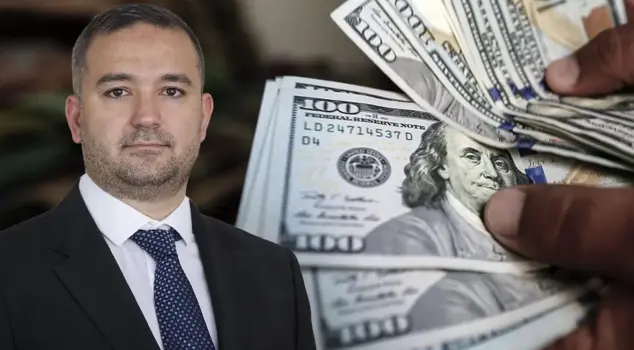
29.11.2024 11:51
The claim that counterfeit banknotes printed abroad have been released into the market has caused a震动 effect in the markets, leading to a halt in dollar purchases in Adana following Istanbul. The increasing cases of fraud involving counterfeit 50 dollar bills were confirmed by a report prepared by the Central Bank on November 20. The report emphasized that the banknotes have features designed to deceive machines.
The Istanbul Chief Public Prosecutor's Office for Smuggling, Narcotics, and Economic Crimes Investigation Bureau took action regarding claims that counterfeit $50 and $100 banknotes printed abroad were circulated in Istanbul, causing some currency exchange offices in the Grand Bazaar to stop buying dollars. The Chief Public Prosecutor's Office initiated an ex officio investigation to examine the issues of counterfeiting and distribution of fake money.
AFTER ISTANBUL, ADANA
While the Grand Bazaar and banks in Istanbul stopped buying dollars, the crisis also spread to Adana. Currency exchange offices in Adana also halted dollar purchases. Posters hung on the windows of businesses featured images of $50 and $100 bills, stating, "Due to the circulation of counterfeit bills in the market, we are not buying $50 and $100 until this situation is resolved."
CONFIRMED BY THE CENTRAL REPORT
A new development regarding the counterfeit dollar crisis has occurred. According to a report in Hürriyet, the increasing cases of fraud involving counterfeit $50 bills in the market were confirmed by a report prepared by the Central Bank of Turkey (CBRT) on November 20. The report stated: "As a result of technical examinations conducted on the banknotes, it was determined that the counterfeit $50 American dollar banknotes were in an unused and clean condition, similar to original $50 American dollar banknotes in terms of security features and design elements, and were produced as counterfeits, particularly possessing features aimed at deceiving machines."
SERIES NUMBER DETAIL
The report emphasized that "it is of great importance for banks to exercise maximum caution and care regarding counterfeiting to prevent damage to public trust in the banking system and to protect citizens." It was also learned that the Central Bank report included information on the serial and series numbers of 232 counterfeit $50 banknotes.
The report also detailed some counterfeit dollar denominations and their features as follows:
- It was determined that the paper of the suspected counterfeit denominations was in clean condition, of medium quality, with blue and red colored fibers imitated through printing, and that some denominations created a fiber image that glows under UV light.
- In terms of magnetic properties; it was found that they possessed magnetic features in the same areas as the original, and were imitated to deceive ATMs and currency counting machines.
- In the examination conducted to determine printing features; it was noted that they were produced with good visual quality using offset and laser printing techniques, with the front side having black intaglio printing areas containing magnetic ink, while the background and reverse side were printed with non-magnetic ink, containing micro and mini writings that were imitated to a medium-high degree, and the serial-number printing was produced using laser printing techniques.
- The OVI printing was imitated, but the color change was assessed to be of medium degree.
- In the examination conducted to determine the security thread features; it was found that the denominations were produced in two layers, with security threads placed between the layers, having good visual deception capability, and that the security thread placed between the layers did not glow under UV light, but a printing was made on the paper surface that had a series of glowing features under UV light.